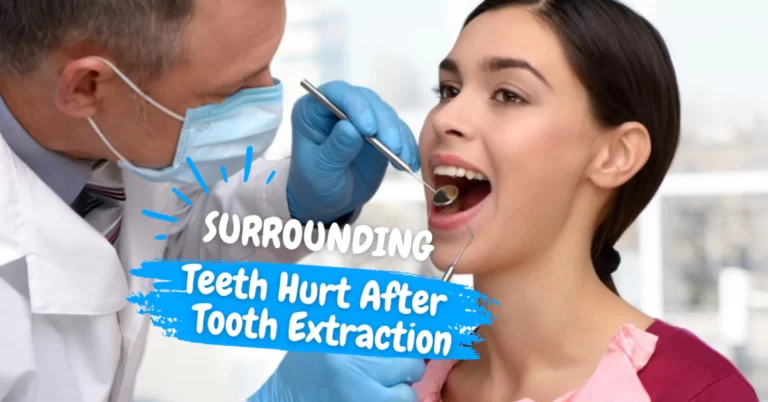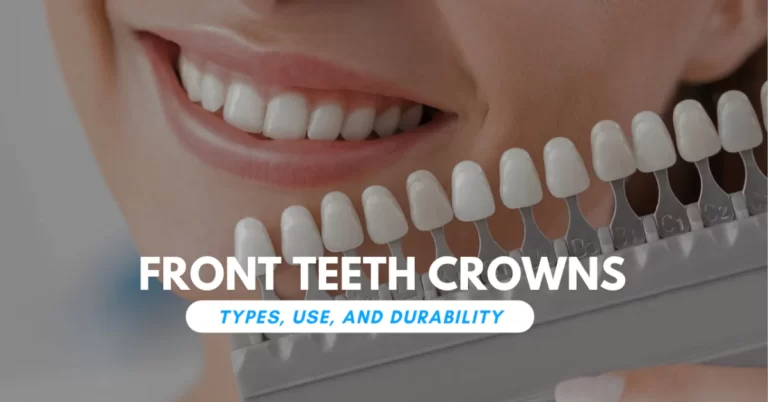How Long Does Meth Stay in Urine? What You Need to Know
Meth, a synthetic drug, affects the central nervous system. It can cause a rush of euphoria, energy, and alertness but also increase the risk of addiction. People can smoke, snort, inject, or swallow it. Here comes the question how long does meth stay in urine and the body?
Meth has a long-lasting effect on the body. The typical types of drug tests for meth are urine tests and hair tests. Urine tests can detect meth for up to four days after use, while hair tests can detect it for up to three months.
The duration of meth in your system depends on several factors. Keep reading to learn about these aspects in-depth.
What is Methamphetamine?
Meth is a manufactured chemical that is derived from amphetamine. Being more potent than amphetamine, it has a different chemical structure that makes it more easily absorbed by the brain.
Meth can be produced in illegal laboratories using over-the-counter drugs and corrosive chemicals. The resulting product is a white, odorless powder that can be cut with other substances.
Meth is a Schedule II drug, showing its high potential for abuse and dependence and its acceptance in medical uses. The only legal meth product in the U.S. is Desoxyn.
How Does Your Body Process Meth?
When you use meth, it enters your bloodstream and quickly travels to your brain, liver, lungs, and kidneys. It is also water-soluble and promptly passes through cell membranes, allowing it to cross the blood-brain barrier rapidly and enter the brain.
In the brain, meth stimulates the release of dopamine. It causes a euphoria and energy surge that can last several hours. Meth also increases neurotransmitters, such as norepinephrine and serotonin, affecting mood, appetite, sleep, and body temperature.
Meth is broken down and excreted by the body in the liver and kidneys. Para-hydroxy meth(pOH-MA) and amphetamine (AMP) are the two primary metabolites produced in the liver by the enzyme cytochrome P450 2D6.
Signs of a Meth Addiction

Meth is a highly addictive drug that can cause physical and psychological dependence. People who use meth regularly may develop tolerance.
They also experience withdrawal signs:
- Fatigue
- Depression
- Anxiety
- Irritability
- Cravings
- Headaches
- Insomnia
- Increased appetite
Some signs of meth addiction include:
- Using meth despite negative consequences on your health, relationships, work, or finances
- Spending more time on obtaining, using, or recovering from meth
- Neglecting your personal hygiene, appearance, or responsibilities
- Experiencing mood swings, paranoia, hallucinations, or delusions
- Having difficulty concentrating, remembering, or making decisions
- Isolating yourself from family or friends who do not use meth
- Lying, stealing, or engaging in risky behaviors to get meth
- Having dental problems, skin sores, weight loss, or infections
Urine vs. Hair Test
Drug screenings often test your body for meth by examining your urine or hair. A blood test can also detect meth, but it is less common and more invasive.
How Long Does Meth Stay in Urine?
When meth enters your system, your body transforms it into metabolites, less complex molecules. Your body will absorb some of these molecules, but the majority of the medicine and its metabolites will end up in your kidneys and end up in your urine.
Your urine will include somewhere between 37% and 54% of the meth you consumed, chemically unaltered. A urine test can identify meth or its metabolites for roughly a few days if you’ve only used it once.
However, if you take meth frequently, some of it may circulate in your body and wait for you to pass pee with it. After consuming meth, you might have to wait up to a week to receive a negative pee test, but the
How Long Does Meth Stay in Hair?
Every cell in your body is exposed to meth when you use it since it travels through your bloodstream. Your body forces these cells out of your hair follicles as it grows. When you can see your hair, the cells have already passed away, but they have also transformed into tiny time capsules that have trapped the meth they ingested.
For around 90 days (3 months) following your last use of the substance, a hair follicle test can successfully find meth and its metabolites. However, after approximately 120 days (4 months), 16% of chronic meth users will still have detectable meth in their hair1. Therefore, it can take a few months before a hair sample tests negative for meth.
How Long Are the Effects of Meth?
Generally, the effects of meth can last from four to 12 hours, depending on the route of administration. Smoking or injecting meth can produce a more intense and immediate high, but it also wears off faster. Snorting or swallowing meth can make a less low and delayed high and last longer.
Short-term Effects of Meth
- Increased alertness and energy
- Increased heart rate and blood pressure
- Increased breathing and body temperature
- Decreased appetite and thirst
- Dilated pupils and dry mouth
- Euphoria and confidence
Long-term Effects of Meth
- Addiction and dependence
- Tolerance and withdrawal
- Memory loss and cognitive impairment
- Mood disorders and psychosis
- Paranoia and hallucinations
- Aggression and violence
How Long Does Meth Stay in Your System?
Urine tests can detect meth for up to four days after use, while hair tests can detect it for up to three months.
The duration of meth in your system depends on several factors, such as:
- How much meth do you use
- How often do you use meth
- How you use meth
- Your body weight and metabolism
- Your kidney and liver function
The table below summarizes the approximate detection times of meth in different types of drug tests.
| Type of test | Detection time |
|---|---|
| Urine | 2–4 days |
| Hair | 90–120 days |
| Blood | 24–48 hours |
| Saliva | 24–48 hours |
Can Other Substances Cause a False Positive for Meth?
Sometimes, a drug test may show a positive result for meth even if you have not used it, a false positive.
The reasons behind false positives are:
Cross-reactivity
Some substances can have a similar chemical structure to meth or its metabolites and trigger a positive result on the immunoassay test. Some examples of these substances are:
- Amantadine, a medication for flu and Parkinson’s disease
- Aripiprazole, an antipsychotic medication
- Atomoxetine, a medication for ADHD
Laboratory Error
Sometimes, a false positive result can occur due to human or technical errors in the laboratory. For example, the urine sample may be contaminated, mislabeled, or mishandled. The testing kit may need to be fixed, expired, or adequately calibrated.
Cross-contamination
Sometimes, a false positive result can occur due to exposure to meth or its metabolites from other sources. For example, you may have touched or inhaled meth residue from a contaminated surface, such as a table, pipe, or clothing. You may have shared a drink, food, or utensil with someone who used meth.
Meth Withdrawal
Meth withdrawal is the process of your body and brain adjusting to the absence of meth after you stop or reduce your drug use. Meth withdrawal can cause unpleasant and sometimes dangerous symptoms, such as:
- Fatigue and lethargy
- Depression and suicidal thoughts
- Anxiety and panic attacks
- Irritability and anger
- Cravings and relapse
Meth withdrawal can last from a few days to several weeks. The first withdrawal phase is called the “crash,” which occurs within 24 hours of your last dose of meth.
The second withdrawal phase is called the “withdrawal,” which usually occurs after the crash. The withdrawal can last from one to two weeks.
The third withdrawal phase is called the “extinction,” which usually occurs after the withdrawal. The extinction can last from several weeks to several months.
Meth withdrawal can be challenging and uncomfortable, but it is not life-threatening. However, some people may experience severe depression, psychosis, or suicidal thoughts that require medical attention.
How to Get Meth Out of Your System?
Let your body eliminate toxins naturally. But practice the following:
Drink Plenty of Water
Water can help your kidneys flush out meth and its metabolites from your urine. It can also prevent dehydration, affecting kidney function and urine concentration. You should drink at least eight glasses of water per day.
Eat a Healthy Diet
A balanced diet can also help your liver metabolize meth and its metabolites more efficiently. Eat foods rich in protein, fiber, vitamins, minerals, and antioxidants, such as lean meats, eggs, beans, nuts, fruits, vegetables, and whole grains.
Daily Exercise
Exercise can help your body burn fat, where some meth and its metabolites may be stored. It can also boost your metabolism, circulation, and immune system, which can help your body eliminate meth and its metabolites faster. Exercise can also improve your mood, energy, and sleep quality, which can help you cope with withdrawal symptoms.
Take Supplements
Some supplements may help your body detox from meth and enhance your overall health.
Vitamin C
Vitamin C may increase the acidity of your urine, which can help your kidneys excrete meth and its metabolites faster.
How Long Does It Take to Get Addicted to Meth?
Meth addiction depends on various factors, such as:
- The amount and frequency of meth use
- The method and route of meth administration
- The purity and potency of meth
- The individual’s genetic and biological factors
- The individual’s psychological and environmental factors
Some people may get addicted to meth after using it only once or a few times, while others may use it for more extended periods without developing an addiction. However, the risk of dependence increases with every use of meth, as the drug alters the brain’s reward system and makes it harder to feel pleasure without meth.
Meth addiction is treatable with behavioral therapies, medications, and support groups. A treatment center can provide a safe and supportive environment for recovery and help you overcome the physical and psychological effects of meth.
Why is a Treatment Center Essential to Recovery?
Meth addiction is a severe and complex condition affecting physical, mental, and social well-being. Quitting meth alone can be very difficult and risky, as you may face intense withdrawal symptoms, cravings, relapse triggers, and co-occurring disorders. Without proper support and guidance, you may not be able to overcome the underlying issues that led you to use meth in the first place.
A treatment center can offer you various services and programs, such as:
- Medical detox can manage withdrawal signs, prevent complications, and prepare you for further treatment. Medical detox can also provide you with medications that can ease your discomfort and reduce your cravings.
- Behavioral therapy can help you identify and cope with your triggers, develop healthy coping skills, enhance motivation and self-esteem, and prevent relapse. Some examples of behavioral treatments for meth addiction are cognitive-behavioral therapy (CBT), contingency management (CM), motivational interviewing (MI), and the matrix model.
- Group therapy can help you build social support, learn from others’ perspectives, practice communication skills, and receive feedback and encouragement. Group therapy can incorporate educational sessions, recreational activities, and peer-led support groups.
- Aftercare is the ongoing support and care you receive after completing a treatment program. Aftercare can help you maintain your sobriety, cope with challenges, and achieve your goals in recovery. Aftercare can include various services and resources, such as sober living homes, outpatient counseling, medication management, 12-step programs, alum networks, and relapse prevention plans.
A treatment center can help you choose the best services and programs for your needs and preferences. It can also monitor your progress and adjust your treatment plan as needed.
Conclusion
How long does meth stay in urine depends on multiple factors. Meth can be detected by drug tests for days or even months after use, depending on the type of test and other factors. There is no reliable way to make meth leave your system faster except by stopping your use and letting your body eliminate it naturally.
However, you can help your body detox from meth by drinking plenty of water, eating a balanced diet, exercising regularly, and taking supplements. If you are addicted to meth and want to quit, seek professional help. A treatment center can be the first step to a new and better life without meth.






